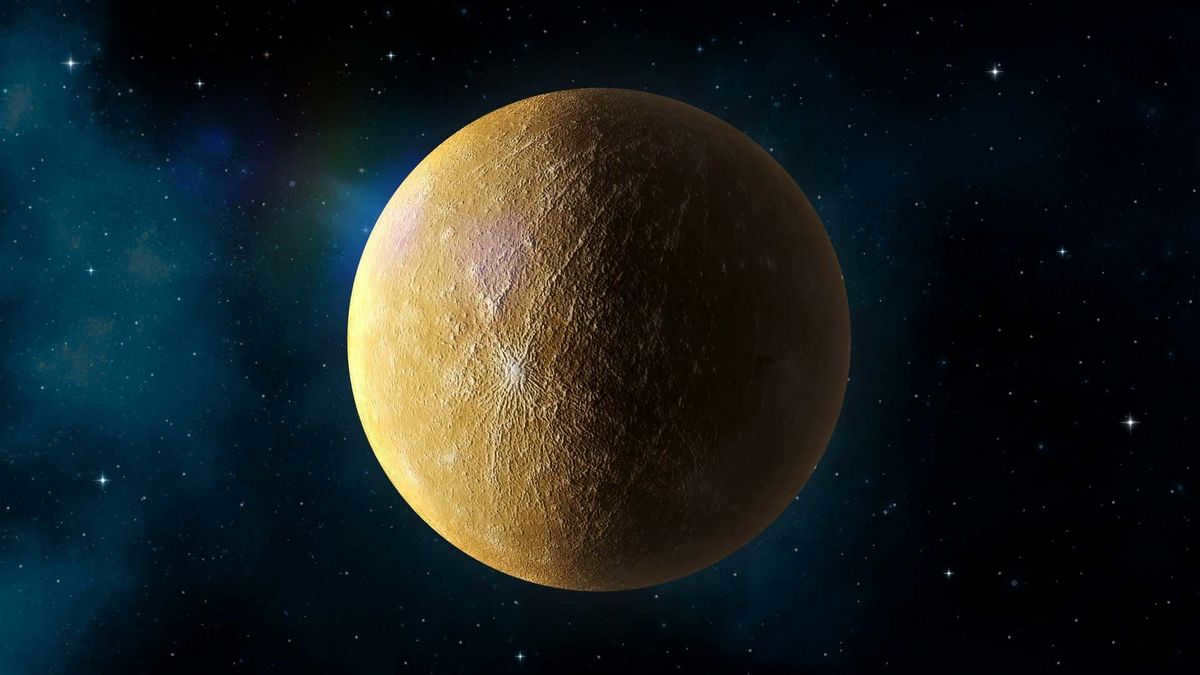
Mercury is the tiniest planet in our solar system. It is categorized as one of the terrestrial planets, and its physical characteristics bear a striking resemblance to that of the Moon.
Exploring Mercury
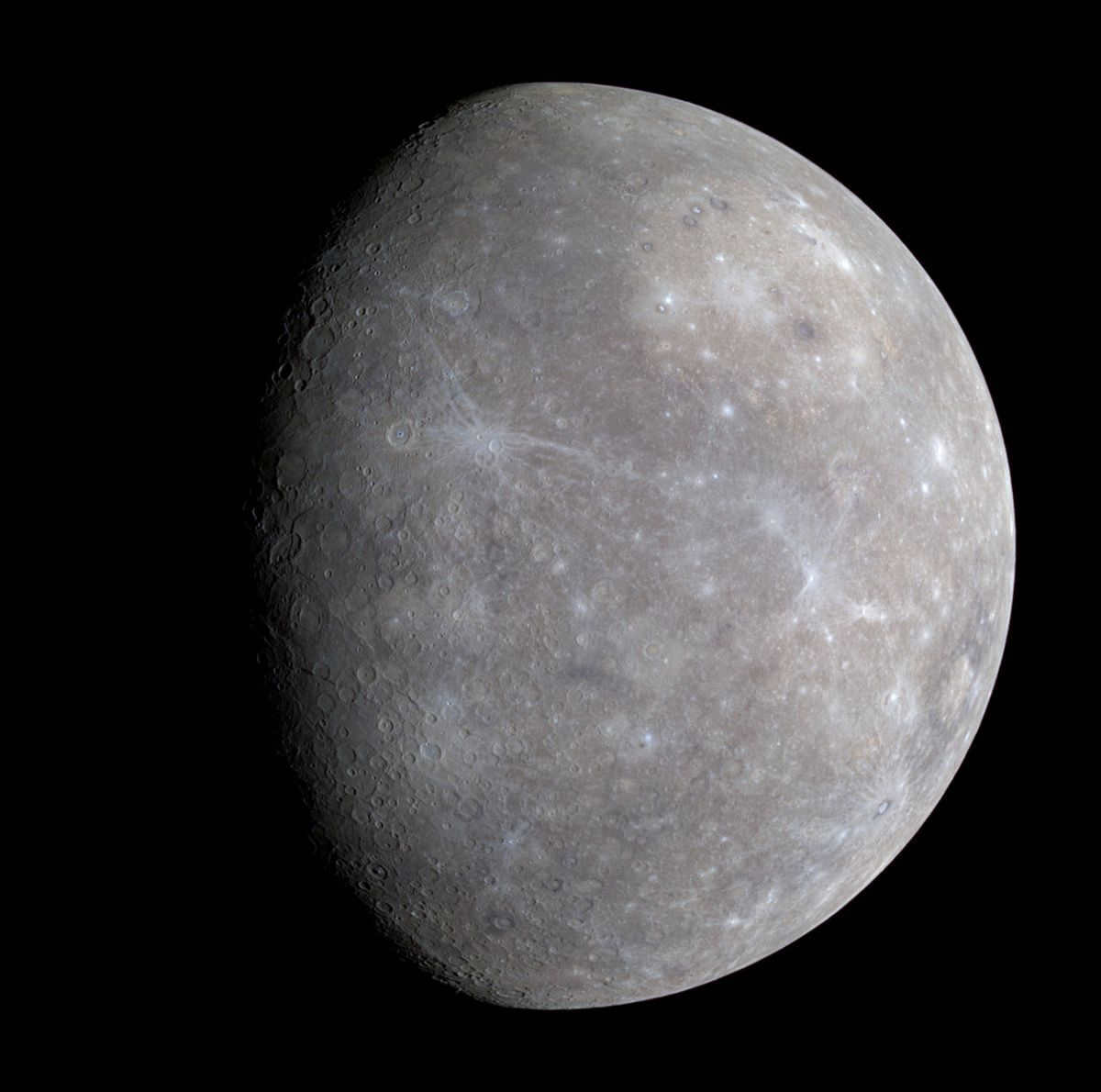

The specific date of Mercury’s discovery remains uncertain, as the Sumerians had knowledge of the planet as early as 3000 BC. Babylonian and Ancient Egyptian priests, who were highly skilled astronomers in ancient times, were also aware of Mercury’s existence.
The planet acquired its name from the Romans, who named it after the ancient god Mercury (known as Hermes in Greek mythology), the patron deity of trade, craftsmanship, and the messenger of the other Olympian gods.
Additionally, in the past, astronomers occasionally referred to Mercury as the morning or evening star, depending on its appearance in the night sky.
Ancient astronomers held the belief that Mercury and its closest planetary companion Venus orbit the Sun, rather than the Earth. However, it is the Sun that orbits around the Earth.
The precise age of Mercury remains uncertain, although it is likely that it formed during the same era as the other planets within our solar system. This hypothesis is supported by radiocarbon analysis findings, which suggest that Mercury emerged approximately 4.6 billion years ago.
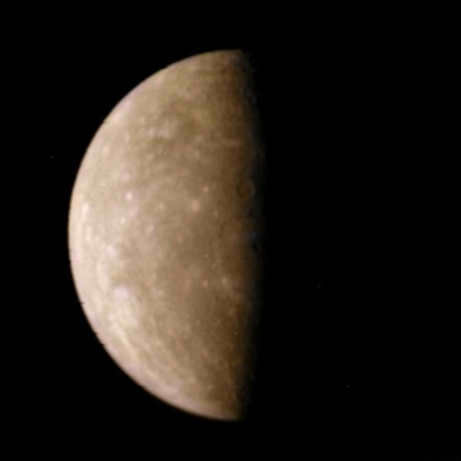
An image of the Mariner-10 flyby in 1974/1975 displays Mercury in its natural color.
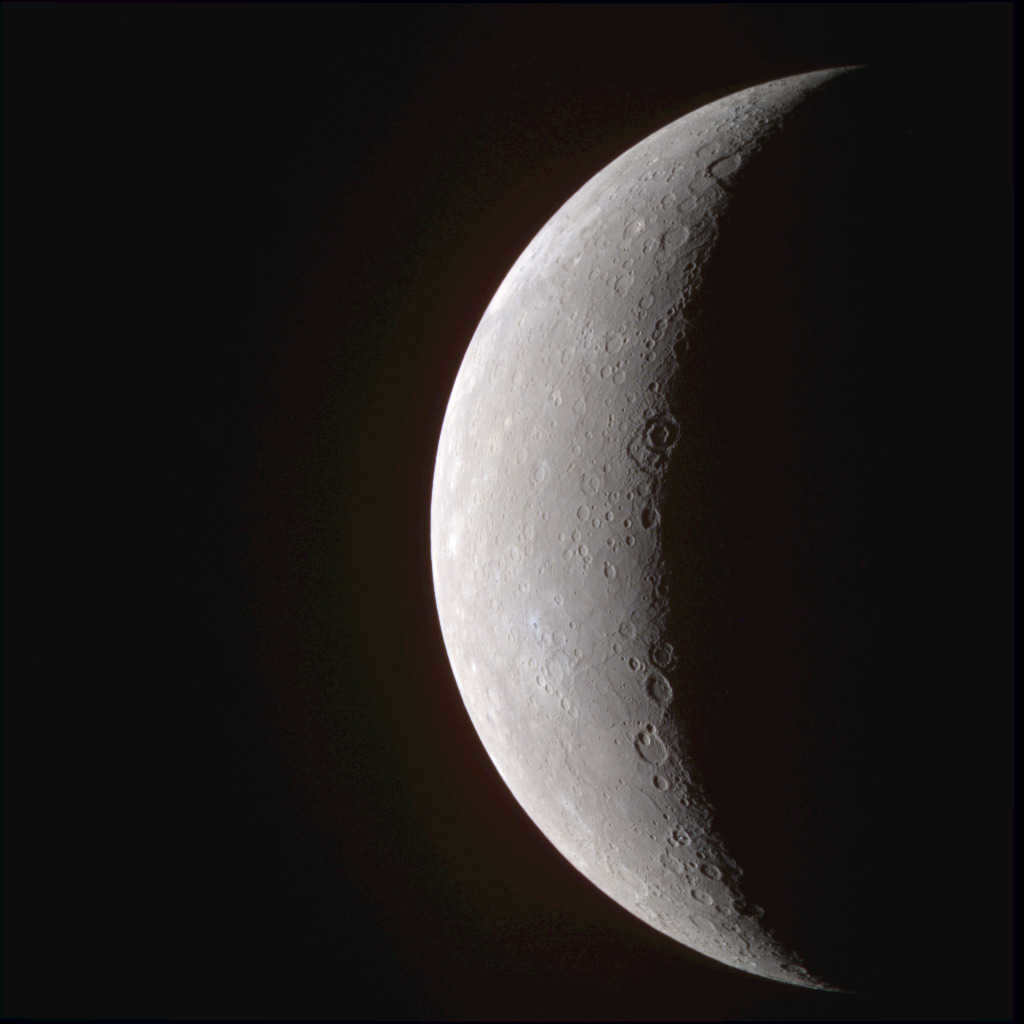

The first high-resolution photographs of Mercury were taken by the AMS Messenger spacecraft on January 22, 2008.
In the 17th century, Galileo Galilei was the first to observe Mercury through a telescope. However, the quality of his optics was not sufficient to gather significant data. The planet’s transit across the Sun was recorded by Pierre Gassendi in 1631. In 1639, astronomer Giovanni Zupi observed Mercury’s orbital phases, providing further evidence for its rotation around the Sun and supporting the heliocentric model.
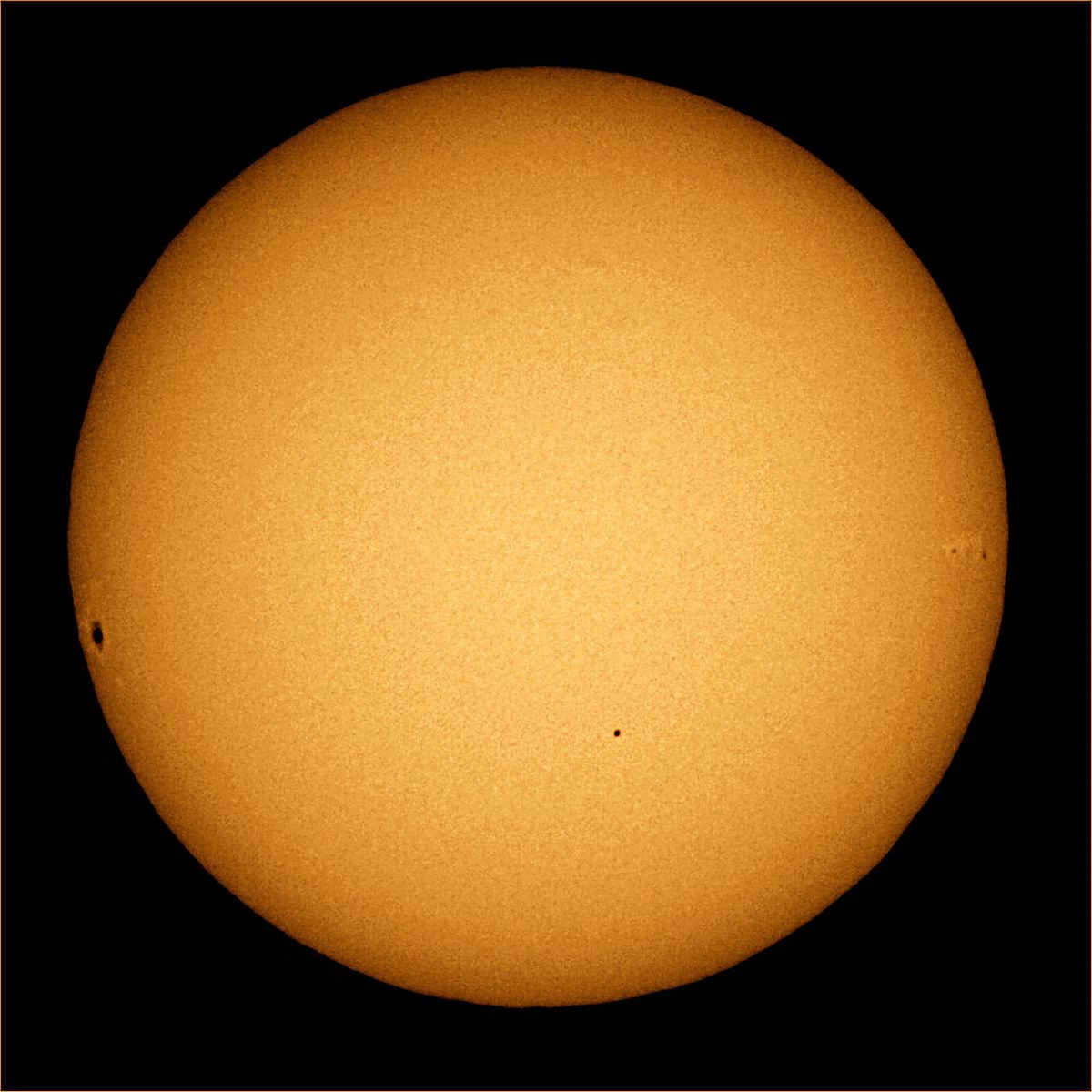

In 1880, Giovanni Schiaperelli provided more precise data on the orbital period of Mercury. Then, in 1934, Yugios Antoniadi created a detailed map of the planet’s surface.
In 1962, Soviet scientists successfully received Mercury’s first radar signal. Three years later, American astronomers replicated the experiment and determined an axial rotation period of 59 days.
However, traditional optical observations did not provide insight into the planet’s surface features. Fortunately, through the use of interferometers, scientists were able to uncover the physical and chemical properties of the subsurface layers.
Position and dimensions of the planet
Mercury occupies the closest orbit to the Sun among all the planets. It is situated 58 million kilometers away from the central star. Along with Venus, Earth, and Mars, Mercury belongs to the terrestrial planets, which exhibit similar characteristics in terms of size and composition.


The diameter of Mercury is approximately three times smaller than that of Earth, measuring 4879 km. In terms of size, this planet is smaller than some of the moons present in our solar system.
Composition
Similar to other celestial bodies in the solar system, the planet Mercury is comprised of three primary constituents:
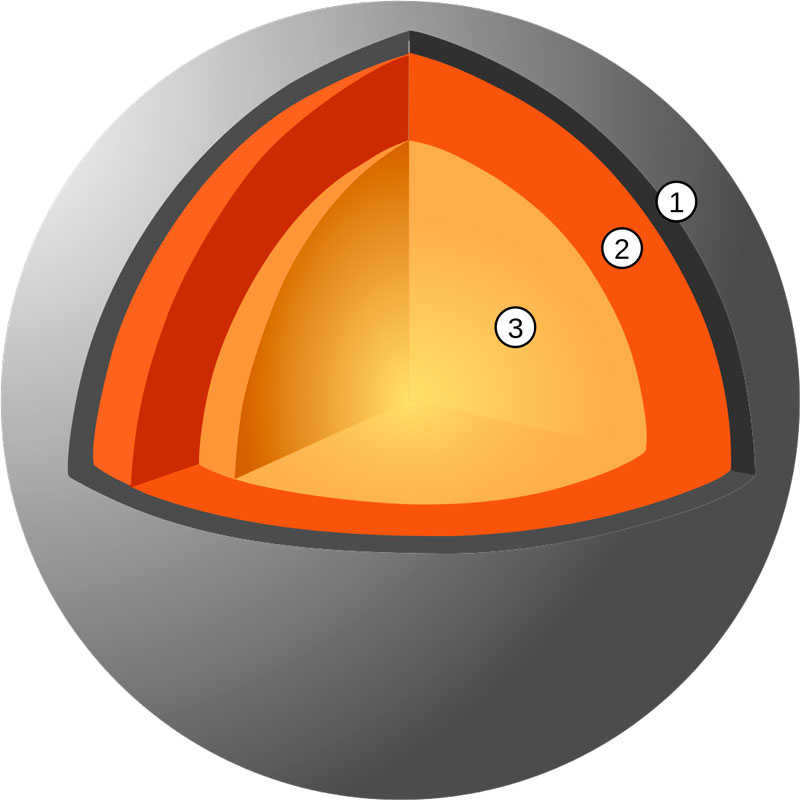
- The outer layer of the Earth, known as the crust, is up to 300 kilometers thick. It is made up of loose and friable soil called regolith. The solid crust, however, is relatively thin, ranging from 100 to 200 kilometers in thickness according to various estimates. Some reports even suggest that it could be as thin as a few tens of kilometers. Despite its thinness, the crust is quite fragile.
- The layer beneath the crust, known as the mantle, is up to 600 kilometers thick. It serves as a transitional substance between the molten components of the Earth’s core on one side and the frozen layers of the crust on the other.
- The Earth’s core is located at the center and has a radius of up to 1,800 kilometers. It is primarily composed of a mixture of iron and nickel. The core is incredibly massive compared to other planets and accounts for about three-quarters of the Earth’s total diameter, which is approximately the size of the Moon.
There are speculations that the birth of Mercury occurred through the accretion of a protoplanetary disk, where the lighter elements were entrained towards the inner regions of the solar system by the solar wind. Given its close proximity to the Sun, it is essential to consider its gravitational impact. Another hypothesis suggests that a youthful Mercury experienced a collision with a substantial planetesimal, resulting in the loss of a portion of its outer crust that dispersed into space. This clarifies the unusually large size of its core, as the planet was initially twice its current magnitude.
The appearance of Mercury’s surface has long remained a mystery to scientists
For an extended period, researchers have struggled to uncover the true nature of Mercury’s surface. The limited visibility of the planet, which can only be observed briefly during sunset or sunrise, coupled with its low position on the horizon, creates unfavorable conditions for observation due to Earth’s dense atmosphere. As a result, telescopes have been unable to provide any meaningful insights into its surface characteristics.
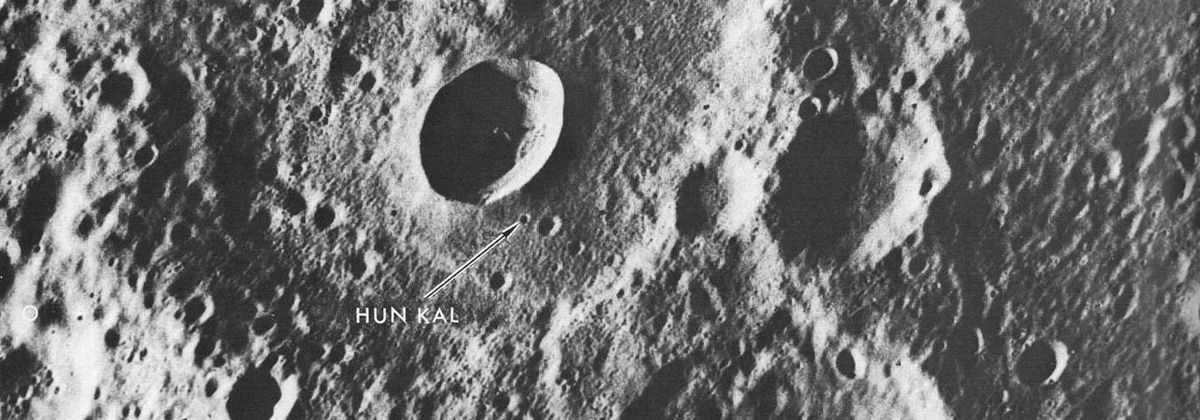
In 1974, everything changed when Mariner 10 made three close flybys of Mercury. It captured images of nearly half of the planet’s surface, providing people with their first glimpse of this mysterious world.
The photographs taken by Mariner revealed that Mercury’s surface is heavily cratered. Scientists believe that these craters were formed billions of years ago when the planet’s terrain was smooth and flat. However, the absence of an atmosphere meant that Mercury’s surface was vulnerable to impacts from space debris, resulting in the formation of numerous deep craters.
The planet bears numerous craters resulting from asteroid collisions and small meteorite impacts. However, it also boasts level valleys on its surface, which were shaped by the once-flowing lava. These features indicate the occurrence of geological processes in the planet’s past.
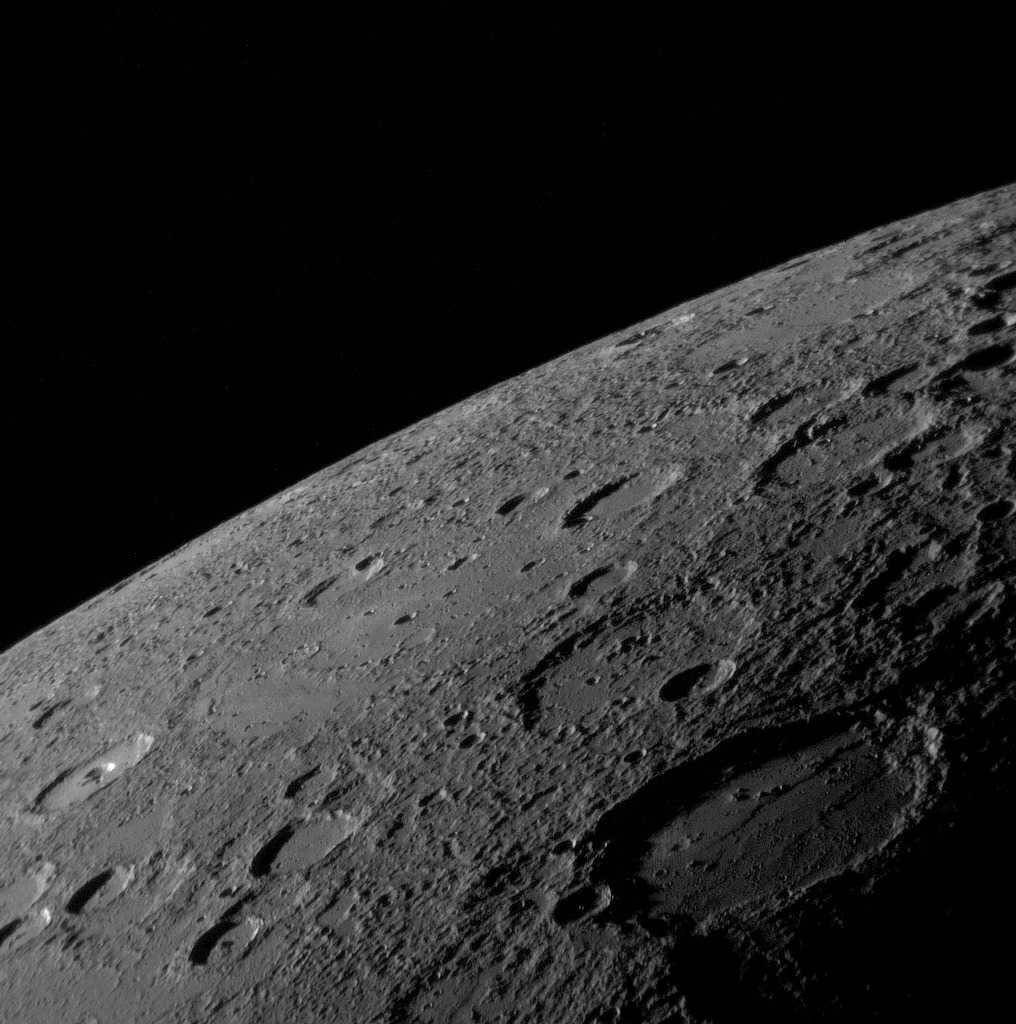
The appearance of Mercury is similar to that of the moon.
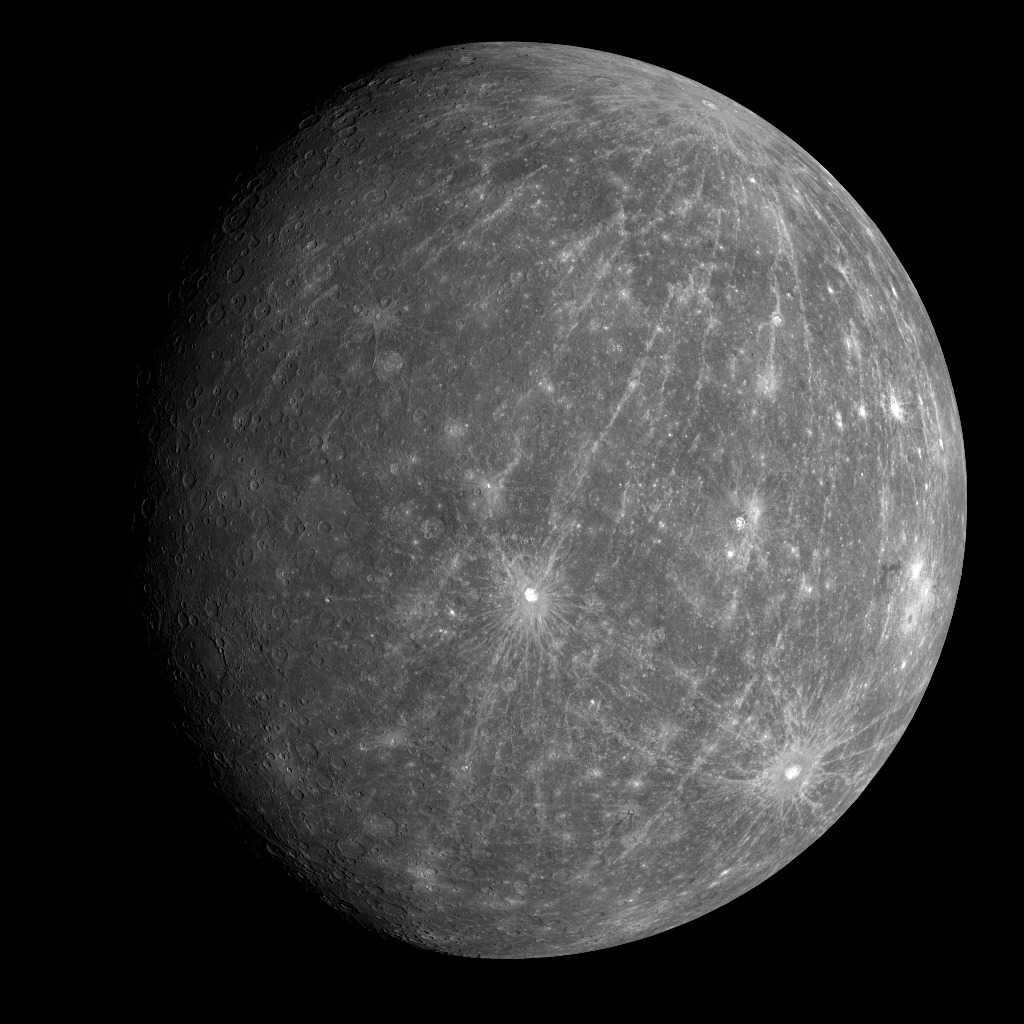

Kuiper crater (located just below the center) (image from AMS Messenger)
Another notable feature of Mercury’s surface is the presence of rocks, which can sometimes stretch for thousands of kilometers. These rocks can reach heights of up to 100 meters and span 2 kilometers in length.
The reason for such a diverse upper layer on the planet is not yet fully understood. The abundance of craters, accumulated over billions of years, suggests that Mercury is not currently exhibiting any activity. However, the presence of lava fields indicates otherwise. This contradiction is still awaiting resolution.
While the crust is being compressed, the plates glide past each other, creating elongated protrusions that span hundreds of kilometers. The emergence of these “scales” likely appeared to be a large-scale cataclysm accompanied by powerful earthquakes. The upper edge, as it slides over the lower edge, bends like a wave and fractures on the opposite side of a deep chasm. This type of landscape is characteristic of Mercury.
Orbit and Motion
Mercury possesses an incredibly eccentric orbit. It revolves around the Sun at a distance of 46 million kilometers and completes one revolution in 88 days.
The shape of Mercury’s orbit is oval and highly elongated, resembling an ellipse. As a result, the planet alternates between approaching the Sun at a distance of 47 million kilometers and being distant at 70 million kilometers.
If we were able to observe the Sun from Mercury’s surface, it would appear three times larger compared to its appearance from Earth.
The planet’s equatorial rotational velocity is 10,892 kilometers per hour, while its orbital velocity around the Sun is 180,000 kilometers per hour. A year on Mercury is equivalent to 88 Earth days.
The orbit of Mercury is only deflected by 7 degrees from its axis, which results in the absence of seasons on the planet. This unique characteristic also leads to certain areas near the poles not receiving any sunlight.
Researchers have discovered that Mercury experiences a gradual shift over time in relation to the Sun, known as precession. The displacement of Mercury’s orbit relative to the Sun was a puzzling mystery for astronomers in the 19th century. In order to explain this phenomenon, scientists even proposed the existence of an unknown planet closer to the star.
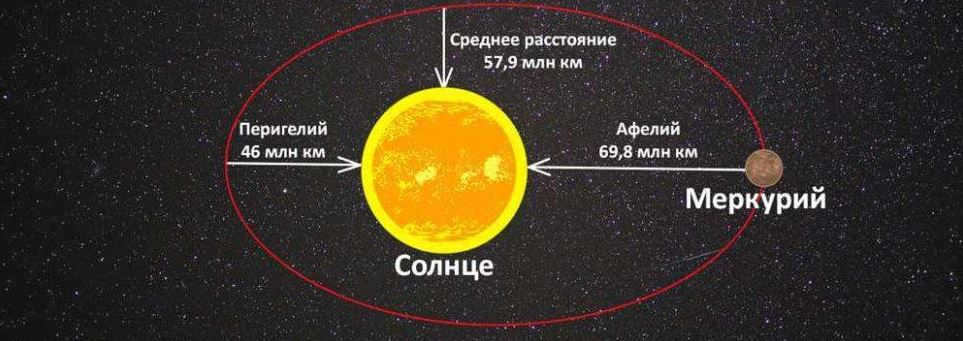
The explanation of precession came about in the 1920s. During this time, Albert Einstein released his General Theory of Relativity, which provided an understanding of why Mercury’s orbit shifts over time. This hypothesis was later validated during a solar eclipse.
Measurements indicated that Mercury’s spin-orbit resonance (the number of rotations the planet completes in its orbit) is 3:2. Due to this unique characteristic, an extraordinary phenomenon occurs that is not observable on Earth. If an individual were on Mercury’s surface, they would witness the Sun rising to its highest point in the sky and then descending along the same trajectory to the horizon.
Characteristics of the air envelope
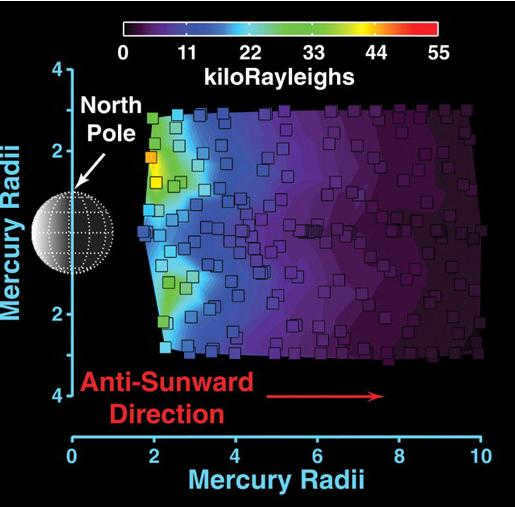
Mercury is known for its rarefied helium atmosphere, which contains trace amounts of neon, argon, and hydrogen. These gases are primarily brought in by the “solar wind” and subsequently expelled by it.
The gas atoms are widely separated and unable to form stable bonds due to Mercury’s weak magnetic field. As a result, Mercury lacks a distinct atmosphere.
Consequently, the surface temperature of Mercury fluctuates significantly – more so than any other planet in the solar system.
In the equatorial regions, the average daytime temperature reaches +427 degrees Celsius, while dropping to -173 degrees Celsius at night. The polar regions, on the other hand, are constantly enveloped in frigid temperatures, with the mercury never rising above -93 degrees Celsius.
Research indicates that the uppermost layer of the planet’s surface is composed of various elements, with oxygen making up 42%, sodium accounting for 29%, hydrogen comprising 22%, helium representing 6%, and potassium making up 0.5%.
Magnetic Field of Mercury
The magnetic field of Mercury is estimated to have emerged approximately 3.7-3.9 billion years ago. It possesses a dipole structure and exhibits remarkable symmetry. However, its orientation deviates slightly, only by 10 degrees, from the planet’s axis of rotation, making it challenging to ascertain its exact origin. Scientists believe that the generation of Mercury’s magnetic field can be attributed to the dynamo effect, a phenomenon similar to the one observed on Earth.
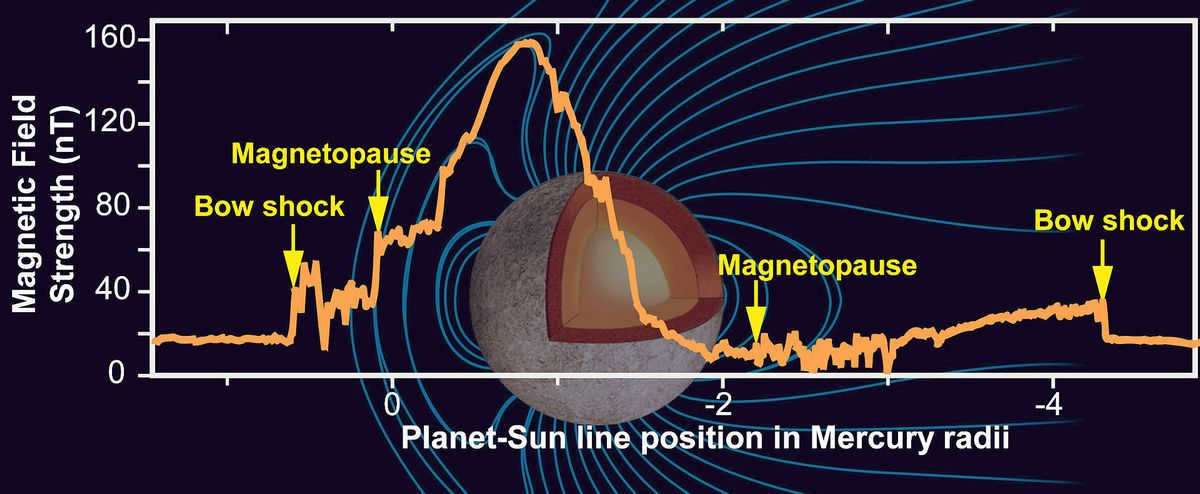
Mercury has a magnetic field strength of about 300 nTl in this scenario, which is 100 times weaker than that of Earth. However, despite its relatively low intensity, Mercury’s magnetic field has the ability to influence the movement of the solar wind, resulting in the creation of the magnetosphere, which is also notable for its small size.
Scientists theorize that the magnetic field is generated by the circulation of materials in Mercury’s liquid core. The planet’s close proximity to the Sun leads to a significant tidal effect, which keeps the core in a liquid state, necessary for magnetic field formation.
After the launch of the “Messenger” satellite to Mercury in 2003, researchers discovered that the planet’s close proximity to the Sun leads to unique phenomena on its surface. The solar wind generates swirling patterns, which are tangled knots within the planet’s magnetic field, stretching up to 800 kilometers. Furthermore, scientists have identified distinct “windows” or zones that form as a result of a decrease in magnetic field strength.
How to locate Mercury in the sky
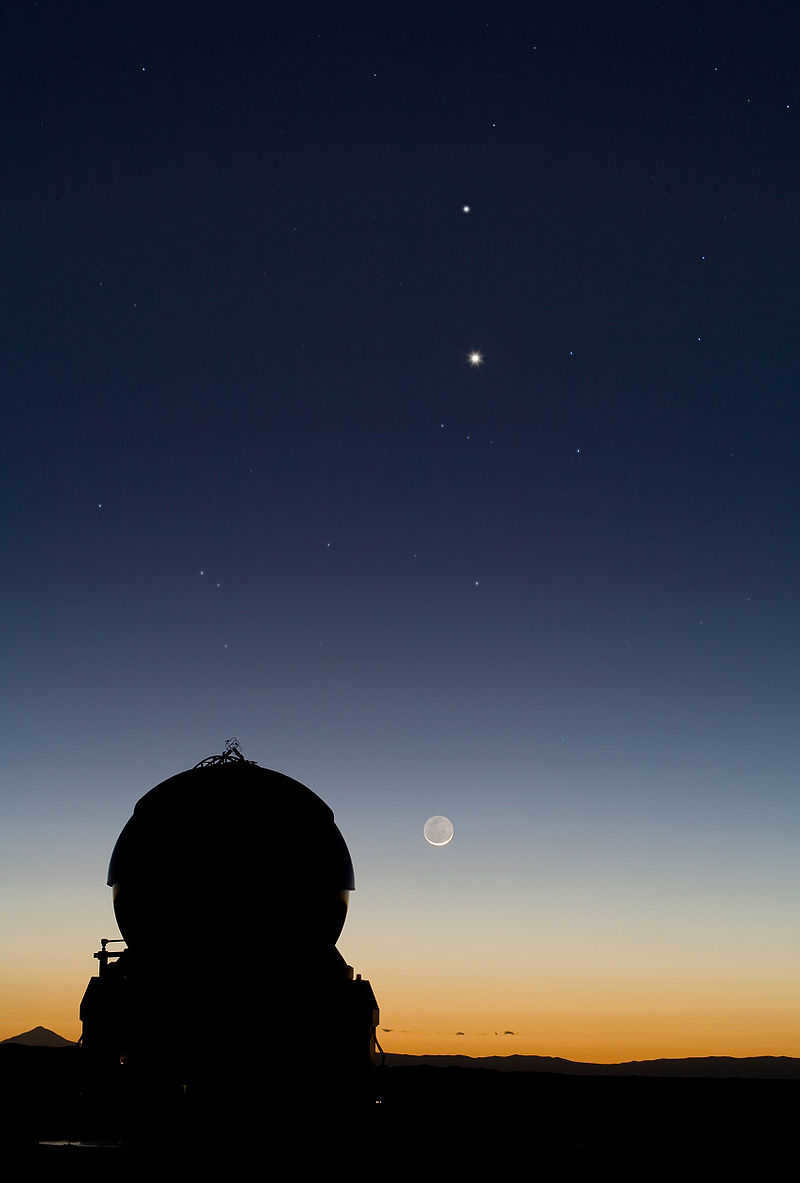
Mercury can always be observed as a brilliant star. In actuality, it will be the initial of the stars that are detectable in the nighttime sky. However, in order to catch a glimpse of Mercury, you require an unobstructed, transparent, and untainted horizon, devoid of light pollution.
To observe this celestial body, you should direct your gaze towards the east in the morning, prior to the rise of the sun, or towards the west in the evening, following the setting of the sun. During the first half of the day, Mercury is worth seeking in the eastern region of the atmosphere, yet due to its extremely close proximity to the Sun, the planet never strays far from the radiant source.
You must promptly orient yourself and commence your search shortly after sunset or sunrise. It is crucial to bear in mind that the planet is consistently within 28 degrees of the radiant source.
In the temperate latitudes of the northern hemisphere, you can spot Mercury between January and April for evening observations, and between July and October for morning observations.
For the southern hemisphere, these dates should be reversed. Look about ten degrees above our star, forty-five minutes before sunrise. Mercury will appear as a bright, white dot, although it may have a pinkish hue in the evening.
While Mercury can be observed with the naked eye, it’s much more fascinating to use a small telescope. Through a telescope, the planet appears as a small disk measuring about 5 to 15 arc seconds in diameter. The disk exhibits phases, similar to the Moon’s crescent shape.
When it comes to observing Mercury through a telescope, the process is quite similar to observing other planets. However, it does require high-quality equipment. The recommended choice is a reflector telescope. By using an 80mm telescope with a magnification of 100x, one can witness the different phases of Mercury.
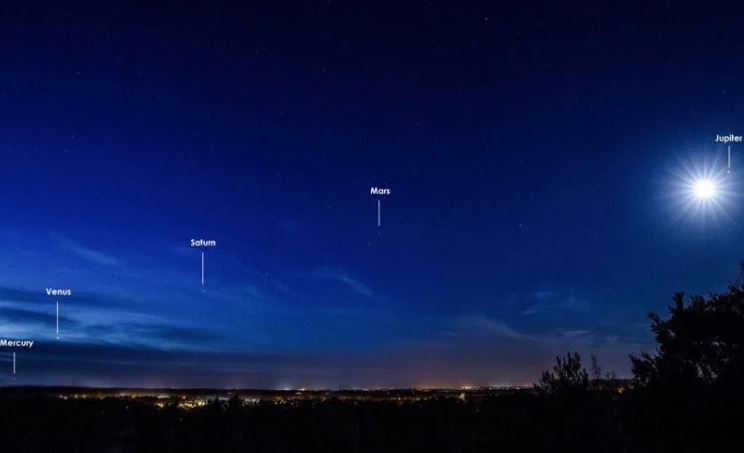
However, observing minute features on the lunar surface can be quite challenging. This task requires not only a high-quality telescope, but also expertise in the field. Ideally, one should use a telescope with an aperture of at least 100 mm to achieve satisfactory results. A telescope with a 250 mm aperture would be even more beneficial, as it would enable the observer to explore details on both the terminator and the opposite side of the Moon.
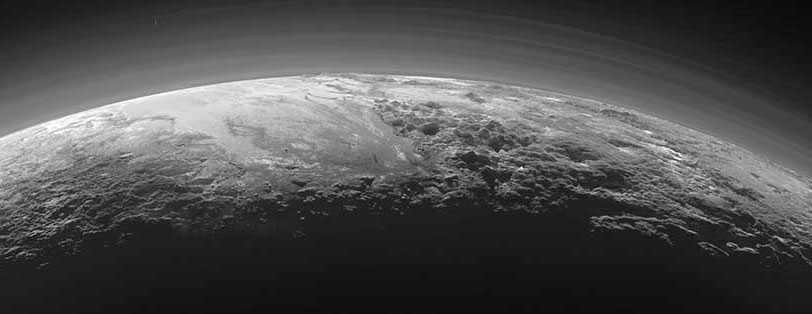
- Mercury has the most extensive amount of genuine ice within its depths of craters. This ice could have been brought to Mercury by comets and meteorites, or it may have even formed from water vapor escaping from the planet’s interior.
- The brightest area on Mercury is known as Kuiper and is located within a crater. This area stretches up to 60 kilometers in length.
An intriguing aspect of this planet is its shrinking size. Scientists believe that this reduction is caused by the gradual cooling of the planet, which takes place over millions of years. As a result of this cooling, the planet’s surface crumples and lobate-shaped rocks form.
Frequently Asked Questions
The duration of a flight from Earth to Mercury depends on the characteristics of the spacecraft. Light can cover this distance in 4.3 minutes. The Mariner 10, launched in 1974, reached Mercury in 147 days. Another artificial satellite, Messenger, reached the planet’s orbit after 40 years, taking 1260 days to do so.
The sky over Mercury is dark even during the daytime because the planet lacks an atmosphere that scatters sunlight.
This is due to the close proximity of the planet to the Sun. The rings of other planets are composed of frozen debris, asteroid fragments, and other celestial objects that, when near Mercury, are simply melted by the intense solar winds.
No, the conditions on Mercury are completely unsuitable for the origin of life. In order for self-replicating organisms to emerge on the planet, a number of conditions must be met. Specifically, water must not freeze or evaporate for extended periods of time. However, on Mercury, there are significant temperature fluctuations that make this impossible.
Scientific Facts about the Planet Mercury: A Video Review
After Pluto was reclassified as a dwarf planet, Mercury assumed the title of the smallest planet in our solar system. Resembling the Moon in its rocky composition, this celestial body resides closest to the Sun, making it a challenging subject for scientific exploration. Nevertheless, researchers have managed to gather significant knowledge about Mercury, revealing its intriguing nature. Thanks to its distinctive position, Mercury can be aptly described as a realm of juxtapositions.
Because of its close proximity to the Sun, Mercury has the shortest orbit out of all the planets and moves along it the quickest. This is why it was given the name Mercury, after the swift-footed messenger of the gods in ancient Greek and Roman mythology. Interestingly, Mercury was also referred to as the “evening star” and the “morning star,” even though ancient astronomers were aware that it was the same celestial object. They also knew that Mercury, along with Venus, orbits around the Sun.
Curious details about Mercury
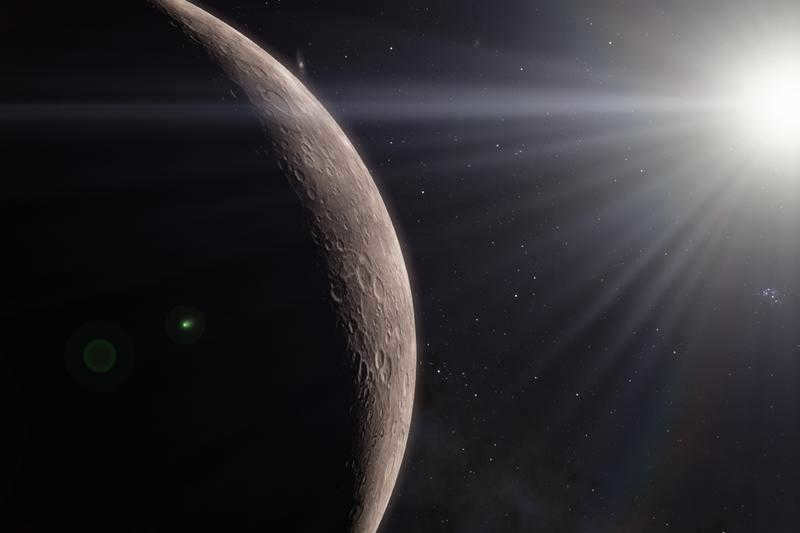
Because of its unique position, Mercury has several distinguishing features compared to other planets. It may even surprise some individuals with its characteristics. Below are some fascinating details about Mercury.
- Mercury holds the title of the smallest planet in the solar system. While Pluto previously held this distinction, it was later stripped of its planetary status.
- Despite being the closest planet to the Sun, Mercury is not the hottest. Surprisingly, Venus holds that record. Due to the greenhouse effect, the surface temperature of Venus reaches a scorching 470 degrees Celsius.
- A day on Mercury lasts 176 Earth days, which is the time it takes for the planet to complete one full rotation from sunrise to sunrise. However, the sidereal day, which is the time it takes for the stars to complete a full revolution in the sky, is much shorter at 58.65 days. This discrepancy is due to the unique orbit and rotation of Mercury.
- One day on Mercury is equal to two years on Mercury – it takes 88 Earth days for Mercury to complete one orbit around the Sun.
- Water ice can be found on the poles of Mercury, as well as in craters and shaded areas where the Sun doesn’t reach. There is a significant amount of water ice on the planet.
- Mercury possesses a thin atmosphere.
- With its high density, Mercury ranks second among all planets in the solar system, with Earth taking the first place.
- Mercury has the largest core relative to its size compared to all other planets and satellites in the solar system.
- Despite its small size, Mercury has its own magnetic field, although it is 100 times weaker than Earth’s. Surprisingly, the much larger Mars does not have a magnetic field.
- When observing the Sun from the surface of Mercury, its disk will appear three times larger. Moreover, due to the thin atmosphere on Mercury, the Sun’s disk will appear white without any optical distortions.
- During the daytime at the equator on the illuminated areas of Mercury’s surface, temperatures can rise up to a scorching 430 degrees, while in the craters near the poles, temperatures can drop to a bone-chilling -180 degrees.
- Mercury and Venus are the only planets in our solar system that lack a natural satellite.
- On the surface of Mercury, there are hydrogen geysers that occasionally erupt.
- The largest impact crater on Mercury is called Caloris, which measures a whopping 1,550 kilometers in diameter.
- Unlike other planets, Mercury does not experience seasons and remains the same throughout the year.
- Mercury possesses a gas tail similar to that of a comet, stretching approximately 2.5 million kilometers. This phenomenon occurs due to the powerful solar wind that blows away part of Mercury’s atmosphere.
- There is a hypothesis suggesting that in the distant past, Mercury used to be a moon of Venus. However, it got separated from Venus after a collision with a massive object.
- Mercury frequently holds the title of being the planet closest to Earth.
As is evident, Mercury possesses its own unique characteristics and harbors a multitude of enigmas.
Mercury is the planet that is closest to the Sun, therefore it has the shortest orbit and completes a full revolution in 88 days. However, unlike other planets, Mercury’s orbit is not perfectly circular but rather elongated. As a result, there are times when it is closer to the Sun and times when it is farther away. This variation in distance from the Sun also leads to significant differences in surface temperatures on the planet, even at a single point, depending on its position in its orbit.
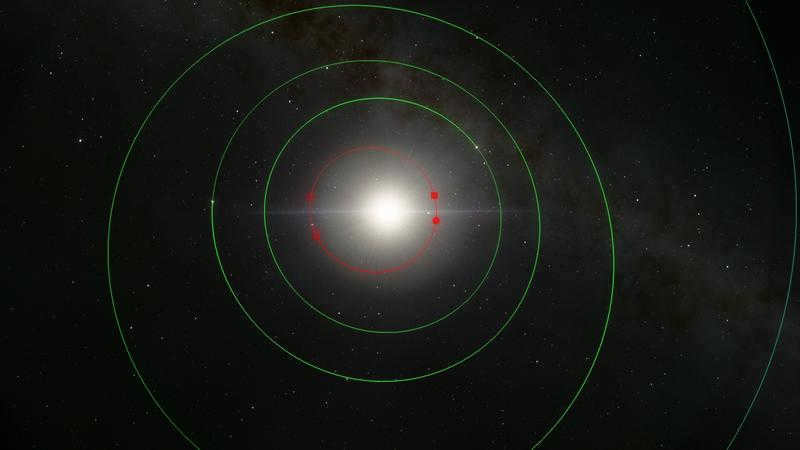

The orbit of Mercury (depicted in red) and its neighboring planets (depicted in green).
When Mercury is at its closest point to the Sun, known as perihelion, it is approximately 45.9 million kilometers or 0.3 astronomical units away. At aphelion, the most distant point in its orbit, Mercury is approximately 69.7 million kilometers or 0.47 astronomical units away. The difference between these two points is quite significant, being one and a half times greater.
Mercury’s main characteristic is its slow rotation on its axis. It is believed that it used to rotate at a faster pace, but due to the gravitational pull of the sun, it has slowed down. An interesting fact about Mercury is that its rotation on its axis and in its orbit are synchronized in such a way that at the point of perihelion, the same side is always facing the sun, and at the opposite side, it will be turned exactly the opposite way. In another year, at perihelion again, the first side will be turned towards the sun once more.
Because of this, Mercury’s meridians are turned towards the sun at the closest point of its orbit. This is where the temperature is the highest, while in other places it does not rise as much.
On Mercury, there is a unique phenomenon that cannot be observed anywhere else. Due to its elongated orbit, the planet’s velocity undergoes changes, and near perihelion, it surpasses its rotational velocity. As a result, the Sun appears to halt in the sky and then move backwards before resuming its forward motion. If one is positioned at points perpendicular to the “hot longitudes,” they can witness the Sun rising, disappearing, and rising again. Additionally, there is a double sunset at the opposite location.
This intriguing occurrence is known as the Joshua effect, named after the biblical hero who caused the Sun to stand still.
Even though Venus and Mars are usually considered Earth’s closest neighbors, in reality, Mercury often takes the title of the closest neighbor. Venus can travel to the opposite side of its orbit, positioning itself behind the Sun, which makes Mercury nearly twice as close. Additionally, if Mercury is on the same side of Earth, it can be even closer. On the other hand, Mars is typically much farther away and only comes close to Mercury during oppositions.
Distinctive Features of the Planet Mercury
Mercury belongs to the terrestrial group of planets, meaning it is composed of solid materials and has a solid surface, unlike the gas giants. It has an average radius of 2439 kilometers and a diameter of 4878 kilometers. While slightly smaller than Jupiter’s moon Ganymede and Saturn’s moon Titan, Mercury is denser and heavier than both.
Despite its small size, Mercury has a significant density comparable to that of Earth. This is due to its large liquid metallic core, which has a diameter of 3600 km. The planet also has its own weak magnetic field and a very thin atmosphere.
Visually, Mercury bears a resemblance to the Moon, with its cratered surface. However, there are also notable differences, such as undulating structures, long rocky formations, and lava plains.
The orbit of the planet Mercury is distinctly elongated, with a single revolution lasting for 88 days.
Surface temperatures on Mercury can vary greatly, depending on the planet’s orbital position and the latitude of the observation site. In the hottest locations, temperatures can reach up to 427 degrees, while at the poles where the Sun never shines, temperatures can drop as low as -193 degrees.
The acceleration of free fall on Mercury is 3.7 m/s 2 , which is equivalent to 0.377 times the acceleration on Earth.
Mercury’s atmosphere is extremely thin, almost non-existent, although this statement is not entirely accurate. It consists of various atoms and molecules, including helium, hydrogen, argon, sodium, oxygen, and other elements. Some of these particles, particularly hydrogen and helium, are captured by the magnetic field generated by the solar wind, while others are dislodged from the surface by this wind. Additionally, there is a process of radioactive decay that results in the release of certain atoms, such as argon.
The density of Mercury’s atmosphere is so minimal that it cannot be replicated by any vacuum device on Earth. A single atom can remain suspended in this environment for an average of 200 days until it encounters another atom or collides with the planet’s surface.
Scientists were astonished to discover water vapor in the atmosphere of Mercury. However, the presence of water molecules on the planet is feasible due to the release of oxygen from the breakdown of oxides on its surface and the abundance of hydrogen. Additionally, it is not uncommon for comets to travel towards Mercury, leading to ice sublimation at the poles.
Mercury possesses a comet-like tail, which is a result of the solar wind stripping away a portion of its already sparse atmosphere. Unfortunately, the weak magnetic field of the planet is incapable of preventing this phenomenon. Recent data suggests that the tail extends approximately 2.5 million kilometers. Although invisible to the naked eye, it represents a region with a higher concentration of atoms. Scientists initially detected Mercury’s tail through spectral analysis, and the findings were later confirmed by the Messenger probe in 2009.
Surface of Mercury
For a considerable period, scientists faced difficulties in determining the appearance of Mercury’s surface. Despite its proximity to Earth and the absence of clouds like on Venus, observing Mercury’s surface proved to be a challenge. This is primarily due to its close proximity to the Sun, making it visible only during sunrise or sunset, and even then, only for a brief period. Additionally, its low position above the horizon, coupled with Earth’s dense atmosphere, further obstructed observations through telescopes.
However, in 1974, everything changed when Mariner 10 conducted three close flybys of Mercury. During these encounters, the spacecraft successfully captured images of nearly half of Mercury’s surface, providing humanity with a much-awaited opportunity to study it. However, this achievement was not without its challenges.
The 3D representation of Mercury incorporates textures sourced from NASA’s official website, which were obtained by the Messenger probe. Although there are some areas where the textures do not align perfectly, this model currently represents the most accurate depiction we have.
Similar to the Moon, the planet Mercury exhibits a multitude of impact craters resulting from asteroid collisions and small meteorite impacts. These craters can be challenging to differentiate in photographs. Among them, the largest one on Mercury is known as Caloris, with a diameter spanning approximately 1550 kilometers.
In addition to impact craters, Mercury also features flat valleys that were formed by lava flows in the past. This indicates that the planet experienced geological activity at some point.
One distinctive characteristic of Mercury’s surface is the presence of extensive rock formations that can stretch for thousands of kilometers. These rock formations can vary in height, ranging from 100 meters to as high as 2 kilometers.
Furthermore, the innermost part of Mercury is gradually contracting – scientists postulate that over time, it has diminished by approximately one and a half kilometers. This process leads to compression and consequent movement of tectonic plates across the entire planet. As a result, the planet’s crust bulges outward, giving rise to rocky ridges.
During the compression of the crust, the plates slide against each other, resulting in the formation of protrusions that extend for hundreds of kilometers. The emergence of these “scales” must have been a cataclysmic event of significant magnitude, accompanied by intense seismic activity. The upper edge, moving over the lower edge, curved like a wave, eventually breaking off on the opposite side of a deep chasm. This type of landscape is characteristic of Mercury.
The composition of Mercury
Similar to other terrestrial planets, Mercury possesses a core, mantle, and crust. The core, which is remarkably large for a planet with a diameter of 4878 kilometers, measures approximately 3600 kilometers in diameter. In fact, it holds the record for being the largest core among all known planets. This massive core constitutes 60% of Mercury’s overall mass and a staggering 75% of its total volume.
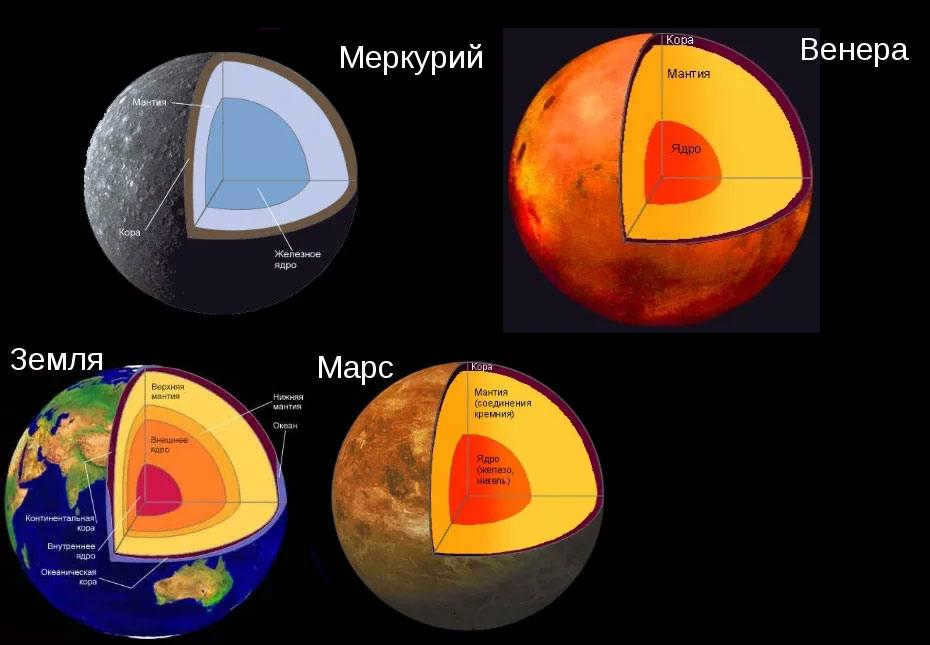

The composition of Mercury and other terrestrial planets.
For a considerable time, it was believed that the core of Mercury is solid due to its small size. However, the planet’s rotation suggests that the core is actually liquid, consisting of iron and nickel.
Mercury’s core contains an unusually high amount of iron compared to other planets. The exact reason for this remains unknown. Various theories have been proposed, but each has its limitations.
According to one hypothesis, Mercury formed from a protoplanetary disk, with lighter elements being pushed further into the solar system by the solar wind. The proximity to the Sun makes its influence significant. Another theory suggests that a young Mercury collided with a large planetesimal, causing it to lose part of its crust, which dispersed into space. This accounts for the unusually large size of its core, as the planet was originally twice its current size.
Mercury’s mantle, which surrounds the core, is composed of silicate and measures 500 to 600 kilometers in thickness. The solid crust, on the other hand, is relatively thin, ranging from 100 to 200 kilometers according to various estimates. Some reports even suggest that it could be as thin as a few tens of kilometers. It is quite delicate.
Galileo Galilei was the first person to point his telescope at Mercury in the early 17th century. However, his telescope was not powerful enough to see anything.
On November 7, 1631, Pierre Gassendi used Kepler’s calculations and observed Mercury passing through the Sun’s disk. This led to the discovery of the planet’s phases and proved that Mercury revolves around the Sun.
In 1737, the English astronomer John Bevis witnessed a rare event – the transit of Venus across Mercury. This phenomenon occurs only once every few centuries, with the next occurrence scheduled for December 3, 2133.
Since then, astronomers have made numerous attempts to study Mercury, calculating its orbital period and even attempting to create a map. However, observing Mercury through telescopes has proven to be extremely challenging, resulting in limited data.
Incidentally, the Hubble telescope has never been utilized for the purpose of studying Mercury due to the risk of damage to its delicate equipment from the intense proximity of the Sun.
Valuable insights into Mercury have been derived from radio astronomical observations, which have allowed for the measurement of temperature variations across different regions and the creation of a comprehensive map.
Although organizing a mission to Mercury poses greater challenges compared to reaching outer planets like Mars, the majority of data on the planet has been gathered through the use of unmanned probes.
The first probe to closely approach Mercury was Mariner-10, which made three successful flybys in 1974-1975. It came within 320 kilometers of the planet and captured numerous high-resolution images, enabling the creation of a detailed map covering almost half of Mercury’s surface. This mission yielded a wealth of valuable information.
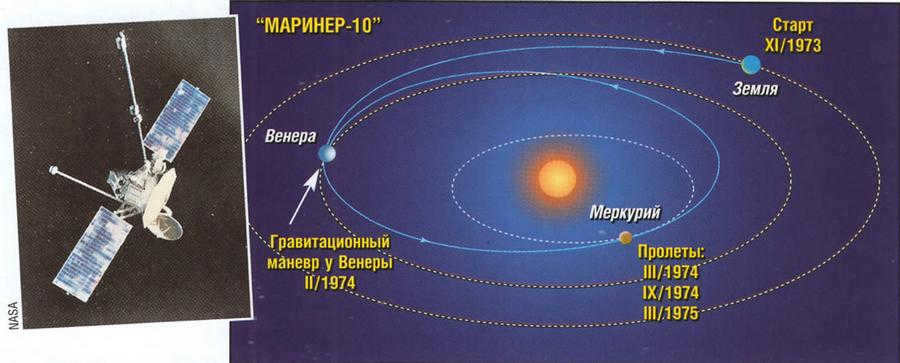

In 2004, the second Mesenger spacecraft was launched and successfully completed its first orbit around the planet in 2008. Following a series of carefully planned maneuvers near Venus and Earth, the spacecraft finally settled into orbit around Mercury in 2011. For several years, this remarkable craft orbited and extensively explored the planet, gathering valuable data and insights. Eventually, in 2015, the spacecraft descended to the surface, creating a notable impact site with a 15-meter-sized crater as its mark.
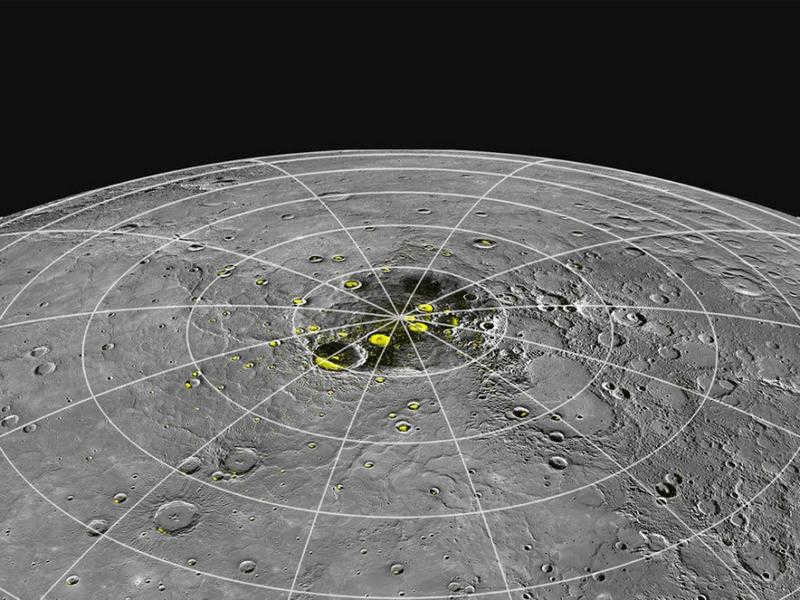
This Messenger image displays the locations of ice found at and in the vicinity of the pole.
Currently, there are no Earth vehicles in close proximity to Mercury, with only two historical instances. However, on October 20, 2018, the BepiColombo mission was launched and is anticipated to arrive at Mercury in 2025. This lengthy timeframe is necessary to navigate through Venus, Earth, and Mercury to reduce velocity and ultimately enter orbit.
Due to its proximity to the Sun, Mercury can only be seen during sunrise or sunset, when it is farthest from the Sun – at its greatest elongations. However, it is not an ideal object for observation even at that time, as its low position above the horizon is accompanied by significant atmospheric interference. The maximum distance from the Sun can reach 28 degrees.
For the best viewing experience, it is recommended to observe Mercury in low latitudes. The closer to the equator, the shorter the twilight period and the faster the onset of darkness. In high latitudes, Mercury is practically invisible.
Mercury can also be spotted in the sky with the naked eye, as its brightness can range from -1.9 to 5.5m.

Mercury and Venus can be seen together in the sky during sunset.
When observing Mercury through a telescope, it is important to have high-quality equipment. Using a reflector is recommended. However, it is important to note that observations of Mercury do not usually reveal many details, as the planet is small and located far away.
You can observe the various phases of Mercury using an 80-mm telescope that has a magnification of 100x. However, it is much more challenging to see any specific features on the planet’s surface, such as spots. To do so, you would need not only a high-quality telescope but also experience in observing Mercury. A telescope with an aperture of at least 100 mm would be recommended for this purpose. If you want to practice locating details on both the terminator and the opposite side of Mercury, a telescope with a 250 mm aperture would be even better. Although it is difficult to consider spots of different colors as detailed features, they can still be observed with the right equipment and expertise.


What Mercury and Venus appear as when viewed through a telescope.
Examining Mercury through a telescope can prove to be quite the test of one’s own skills. Numerous individuals passionate about astronomy have yet to experience this firsthand, making it an endeavor that is certainly worth undertaking.
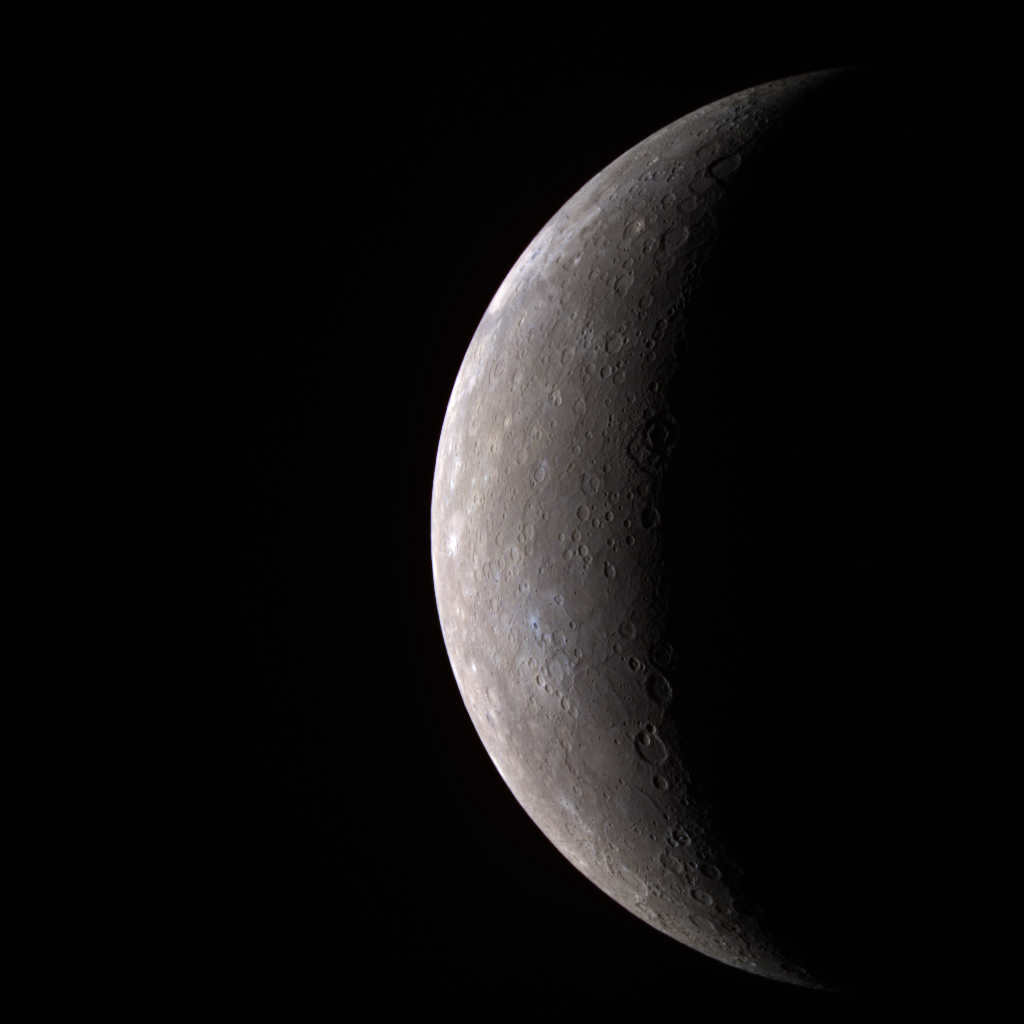
The planet Mercury holds the distinction of being the nearest celestial body to the Sun within our solar system. Its proximity is remarkable, with a distance of merely 58 million kilometers separating it from our radiant star. To put things into perspective, our own planet Earth is situated at a much greater distance of 150 million kilometers from the Sun. Similar to its planetary counterparts, Mercury derives its name from Roman mythology, paying homage to the Roman god associated with trade and commerce, much like the ancient Greek deity Hermes.
Primary factors
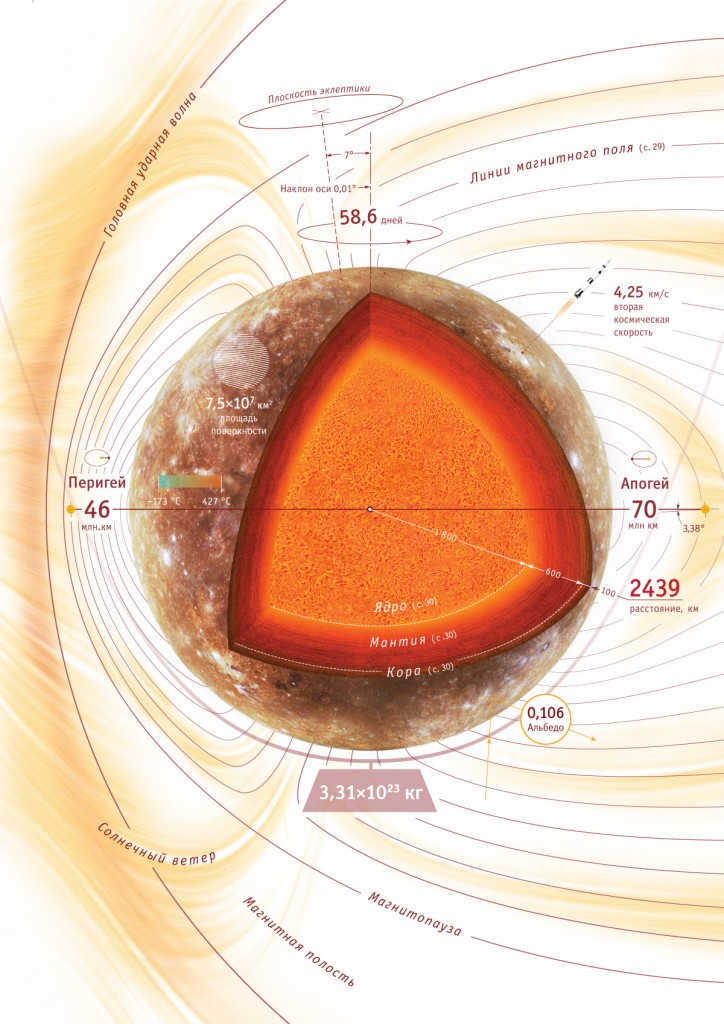

Mercury is the smallest planet in our solar system, with a diameter of just 4879 kilometers. This makes it even smaller than the moons Ganymede and Titan. However, what it lacks in size, it makes up for with its unique metallic core. This core, which constitutes almost half of the planet’s volume, gives Mercury a surprising amount of mass and a strong gravitational force. In fact, if you were on Mercury, you would weigh only 38% of your weight on Earth.
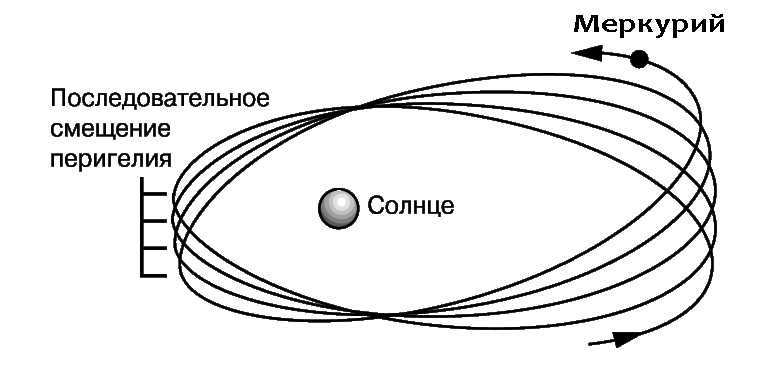
The phenomenon of the planet Mercury’s perihelion shift
Mercury orbits the Sun in an elliptical path that is highly elongated.
When it is closest to the Sun, it comes within 46 million kilometers and then moves away to a distance of 70 million kilometers. It completes one revolution around the Sun in just 88 days.
At first glance, Mercury bears a striking resemblance to our Moon. Its surface is covered with craters and ancient lava flows. The most prominent crater is the Caloris Basin, which spans almost 1,300 kilometers. Like the Moon, Mercury does not have a noticeable atmosphere. However, beneath its surface, it differs significantly from the Moon. It possesses a massive iron core, enveloped by a thick layer of mantle rocks and a thin crust. The planet’s gravitational force is one-third that of Earth’s.
Mercury rotates at a slow pace on its axis, completing one revolution in 59 days.
Composition of the Atmosphere
The atmosphere of the celestial body is composed of a rather sparse mixture of particles that have been captured from the solar wind. It is this atmosphere that allows the celestial body to retain and distribute heat from the Sun. Consequently, the side of the celestial body that is directly exposed to the Sun experiences scorching temperatures of up to 450 °C, while the side that is in shadow cools down significantly to as low as -170 °C.
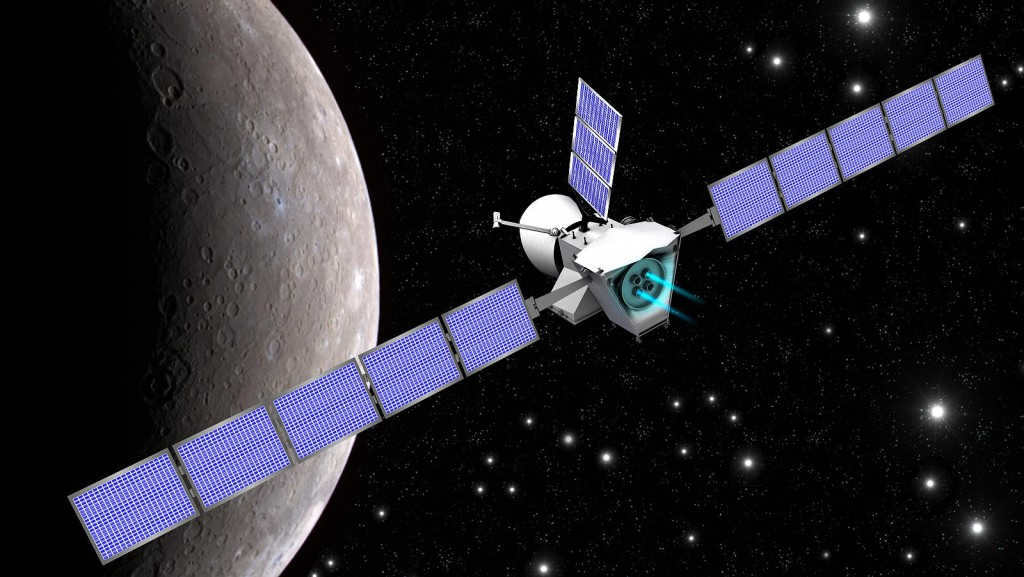

BepiColumbo, a spacecraft that was launched for the purpose of exploring the planet Mercury
The initial probe to successfully reach Mercury was Mariner 10, which made a flyby of the planet in 1974. It was able to capture images of approximately half of the planet’s surface during multiple passes. Then, in 2004, NASA launched the MESSENGER mission. Currently, the spacecraft is in orbit around Mercury and conducting detailed studies of the planet.
Observing Mercury without the aid of a telescope can be challenging due to its close proximity to the Sun, which results in the planet being engulfed in bright sunlight for most of the time.
When Mercury is visible, it can be seen in the western sky shortly after sunset or in the eastern sky before sunrise. When observed through a telescope, the planet exhibits phases similar to those of the Moon, depending on its position in its orbit.
Location and movement
Surface characteristics
Anatomy
Additional readings
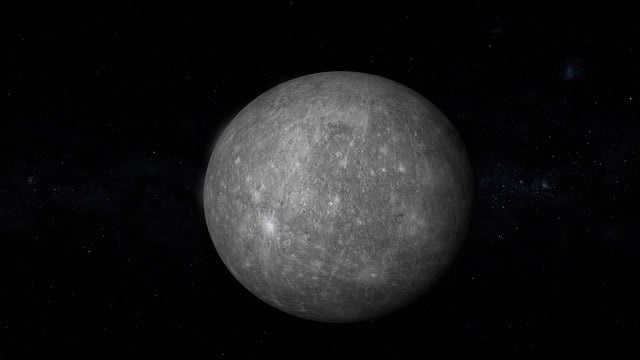
Mercury, the tiniest planet in our solar system, holds the distinction of being the closest to the sun. However, its distinction does not end there. It is worth noting that Mercury poses a challenge for Earth-based observers, as it is only clearly visible for a short period of time right before the sun sets or after it rises.
Research and Study of Mercury Throughout History
Ancient civilizations such as the Sumerians, Babylonians, and ancient Egyptian priests, who were skilled astronomers, were aware of Mercury’s presence as the first planet in the solar system.
Due to its close proximity to the Sun, the study of Mercury has been challenging, and it wasn’t until 1974 that high-quality photographs were finally obtained. This breakthrough occurred with the launch of the Mariner-10 spacecraft, which successfully flew past the planet and captured detailed images.
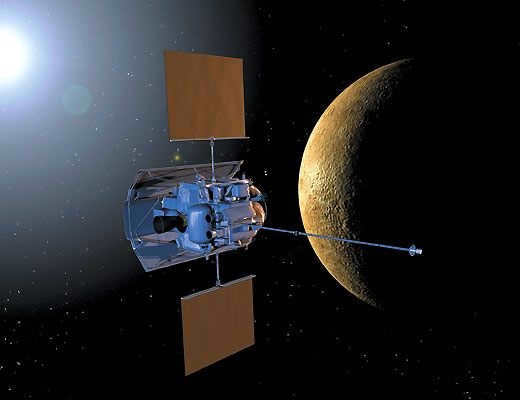

In 2011, the Messenger spacecraft successfully entered Mercury’s orbit, providing valuable data on the planet’s magnetic field, atmospheric composition, and geological features.
Throughout history, renowned astronomers like Galileo Galilei, Pierre Gassendi, and Giovanni Zupi have extensively studied Mercury. Galileo Galilei, in particular, conducted the first telescopic observation of the planet, while Gassendi and Zupi made significant contributions by documenting Mercury’s orbital phases and confirming the heliocentric model of the solar system.
During ancient times, numerous celestial bodies in the solar system were assigned names based on the gods of the Roman pantheon. In line with this tradition, the planet Mercury was named after a Roman deity associated with commerce and travel, as this planet exhibits remarkable swiftness in its motion.
Mercury’s Unique Characteristics: Size, Mass, and Orbit
Mercury possesses a one-of-a-kind orbit, positioned at a relatively close proximity to the Sun, approximately 46 million kilometers away. The planet completes its revolution around the Sun, the center of our galaxy, in just 88 Earth days.
Mercury’s orbit takes the form of an extremely elongated oval, resulting in periodic closeness and distance of the planet from the Sun, measuring at 47 and 70 million kilometers respectively. If a person were to visit Mercury and gaze up at the sky, they would witness the Sun appearing about three times larger than when observed with the naked eye from Earth.
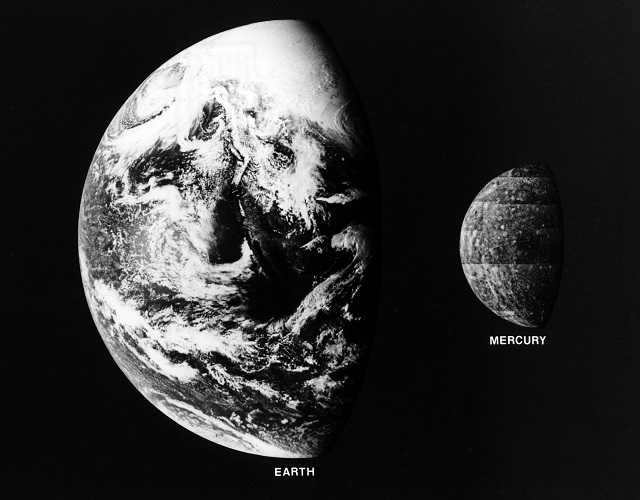

Here are some factors to give an idea of the size characteristics of this celestial object:
The Structure of Mercury
Similar to other planets, Mercury is made up of several main layers:
- The outermost layer of Mercury is composed of its crust, which has varying thicknesses in different regions, ranging from one hundred to three hundred kilometers. The uneven topography of the surface suggests that the crust is brittle, similar to the Earth’s uppermost layer.
- Located beneath the upper layers of the planet lies a core with a diameter of approximately 3.6 thousand kilometers, positioned in the central part. What sets this core apart is its unique properties that distinguish it from other planets within our solar system, such as its significantly higher density. Mercury, for instance, boasts a density of 5540 kg/m3 despite having a diameter of 4878 km. One explanation for this exceptional characteristic is the presence of a liquid core. This theory is supported by the findings from studies that have observed the reflection of radio waves from the outer layer of Mercury’s solid envelope.
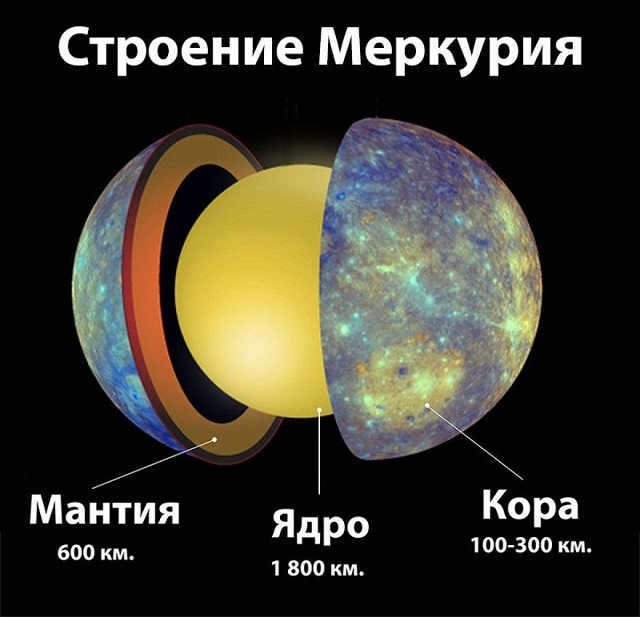

Composition of the Atmosphere
Mercury possesses an uncommon helium-based atmosphere primarily composed of gases transported by the solar wind. As a result of the planet’s feeble magnetic field, the gas atoms are widely dispersed and fail to create stable bonds, resulting in the absence of a distinct atmosphere on Mercury.
The density of Mercury’s atmosphere is merely 1/1000000000000000000000000 of that of Earth’s atmospheric envelope. Essentially, a vacuum extends beyond the surface of Mercury. The exact reasons behind the lack of a well-developed atmosphere on Mercury are still not fully comprehended, but there are several conjectures. One hypothesis suggests that it is connected to the planet’s low density, which is only approximately 30% of Earth’s density.
One possible explanation might be the close distance between Mercury and the Sun. The Sun emits radiation, referred to as solar wind, that has the tendency to remove gases, potentially leading to the lack of an atmospheric layer.
Temperature
The characteristics of the atmosphere result in the temperature on the surface of Mercury being highly variable, with daytime temperatures reaching approximately +427 degrees Celsius and dropping significantly to around -173 degrees Celsius during the night.
The velocity of the smallest planet in our solar system’s rotation is approximately 10,892 kilometers per hour, while its orbital speed around the Sun is about 180 kilometers per hour. A single year on Mercury is equivalent to 88 Earth days.
Scientists have discovered that this planet is currently undergoing a gradual shift in relation to the Sun, meaning its position in space is constantly and slowly changing. This occurrence is known as precession.
Day and night
The alteration between day and night on this celestial body is a unique phenomenon. This phenomenon occurs at a much slower pace compared to other planets in our solar system due to the remarkably sluggish rotation of Mercury on its own axis.
For an extended period, one hemisphere of the planet remains exposed to the Sun. Consequently, the duration of the diurnal and nocturnal periods on Mercury carries a similar temporal significance as the length of its orbital period around the Sun.
The composition of the surface of the planet Mercury
Studying the surface of Mercury has been a challenging task due to its limited visibility from Earth. Nevertheless, in 1974, the Mariner 10 orbiter successfully completed three orbits around the planet, providing valuable insights into its surface features.
Mercury’s surface exhibits a diverse and intricate terrain, characterized by numerous craters of varying sizes and depths, as well as an abundance of rocky formations.
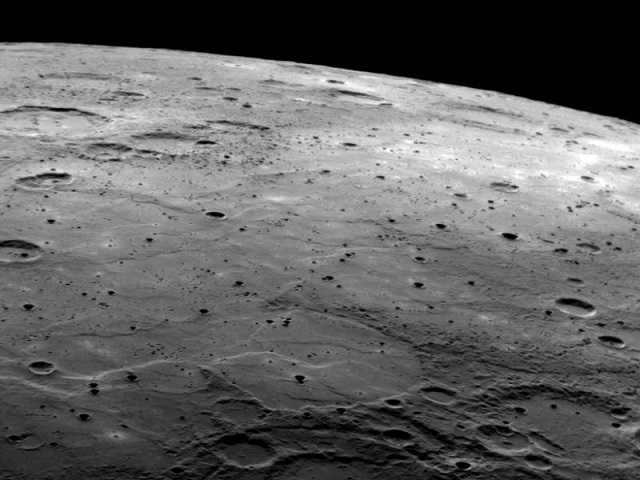
It is worth noting that the process of rock formation on Mercury is distinct from that on Earth. The presence of mountains on Mercury’s terrain is not attributed to the movement of tectonic plates, as is the case on our planet. Instead, these formations are a result of the gradual shrinking of Mercury’s liquid core.
Magnetic field of Mercury
The magnetic field of Mercury possesses a unique composition and symmetry. It exhibits a deviation from the conventional axis of rotation, measuring a mere 10 degrees, which poses challenges in determining its origin. It is postulated that the genesis of Mercury’s magnetic field is attributed to a phenomenon known as the “dynamo effect,” akin to the one that transpired on Earth in the past.
Scientists hypothesize that the magnetic field arises from the fact that the planet’s core is not solid but rather consists of a liquid substance that undergoes circulation within. The close proximity of Mercury to the star induces a formidable tidal effect, keeping the planet’s core in a liquid state, a prerequisite for the formation of a magnetic field.
The scientists propose a theory that the creation of Mercury’s magnetosphere occurred approximately 3.7 to 3.9 billion years ago. Despite its relatively weak strength, Mercury’s magnetic field affects the flow of solar winds and plays a role in the development of distinct characteristics within the planet’s magnetosphere.
Mercury experienced intense bombardment from comets and asteroids during its creation approximately 4.6 billion years ago, as well as during the period known as the “Late Heavy Bombardment,” which concluded around 3.8 billion years ago.
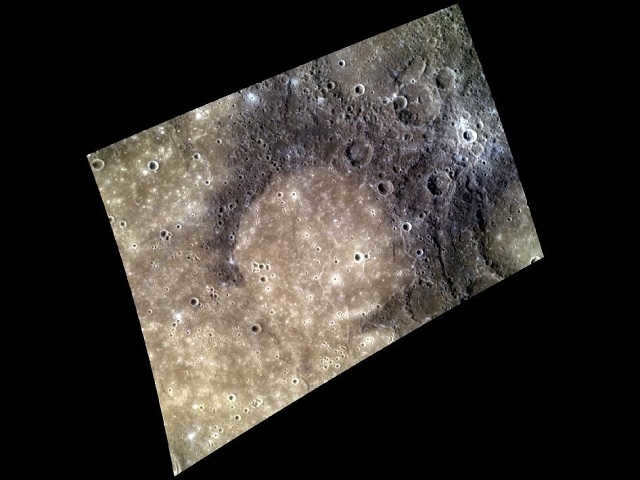
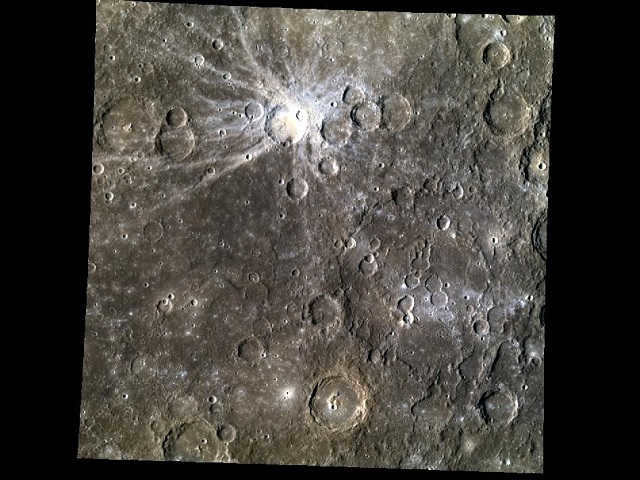


During these occurrences, the surface of Mercury experienced regular impacts from both large and small asteroids, as the planet lacked an atmosphere that could slow down the descent of celestial objects. Additionally, Mercury displayed volcanic activity during these periods, with craters being filled with molten magma, resulting in flat plains resembling the lunar seas.
One of the most distinctive craters on Mercury is Apollodorus, also known as the Spider, which features multiple radial depressions emanating from its central dip.
There is a wide range of sizes when it comes to the craters on Mercury. They can be as small as bowl-shaped depressions or as large as multi-ringed impact basins with diameters reaching several hundred kilometers. These craters can be found at various stages of development, from relatively young ones with clear rays extending from them to highly eroded remnants.
One interesting characteristic of craters on Mercury is the size of their ejections, which are noticeably smaller compared to those found on the moon. This is because Mercury has a stronger surface gravity.
Scientists theorize that Mercury’s age is roughly the same as the age of the other celestial bodies in our solar system, estimated to be around 4.6 billion years. While it is currently impossible to determine its exact age with absolute certainty, there is compelling evidence to suggest that all the planets formed simultaneously.
Water on Mercury
While the weather on the planet’s surface undergoes abrupt fluctuations, there is evidence of water on Mercury. However, it exists not as a liquid, but as ice. Ice deposits can be found within craters located at Mercury’s poles. The absence of direct sunlight in these regions prevents the ice from melting or evaporating.
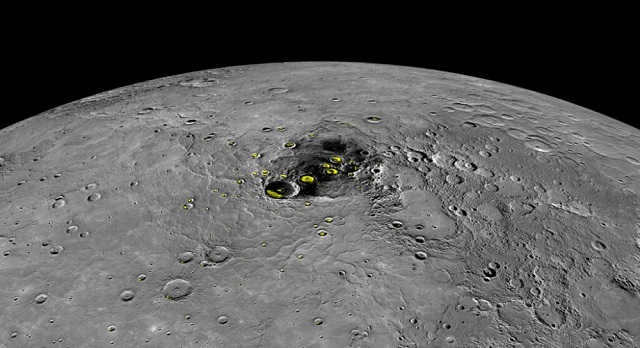

Possibility of Life on Mercury
The conditions on this planet are not conducive to the emergence and evolution of life. In order for living organisms to thrive on Mercury, a multitude of factors must align. One crucial factor is the presence of liquid water, which must remain unfrozen and unevaporated for extended periods of time.
However, Mercury undergoes drastic temperature fluctuations, rendering it impossible for this condition to be satisfied. Moreover, the planet experienced intense meteorite impacts roughly 3.9 billion years ago, further hindering the potential for life to emerge. Collectively, these factors have created an inhospitable environment for the development of life on Mercury.
At night, a bright dot can be seen in the sky, which is Mercury. To find it, it is crucial to have an unobstructed, clear, and pollution-free horizon without any artificial lights.
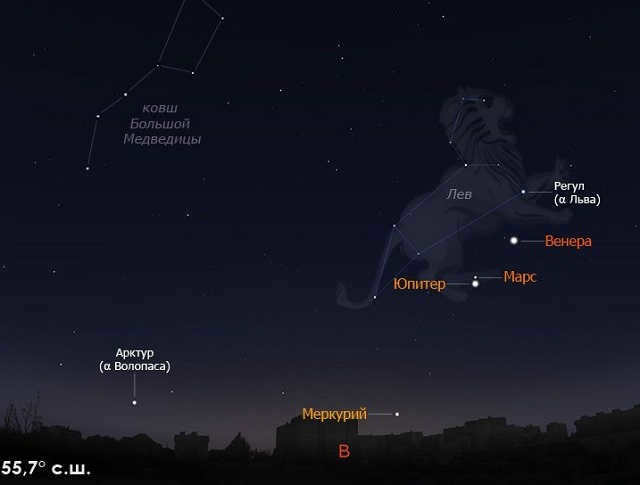
In the sky, you can spot Mercury in the east before sunrise or in the west after it has set. However, due to its close proximity to the Sun, Mercury is always found within 28 degrees of it.
Throughout the year, Mercury can be observed in the temperate regions of the northern hemisphere during the evening from January to early April, and in the morning from July to October. For observers in the southern hemisphere, these periods are reversed.
What is the distance between Mercury and the Sun?
Mercury is the planet that is located closest to the Sun. The gap separating these two celestial bodies, namely the star and the first planet, measures a total of 57.91 million kilometers.
How long does it take to travel to Mercury?
The duration of a journey from Earth to Mercury can vary based on the specific characteristics of a spacecraft. For instance, light is capable of traversing this distance in approximately 4.3 minutes. On the other hand, the Messenger spacecraft required a total of 1,260 days to reach the orbit of this planet.
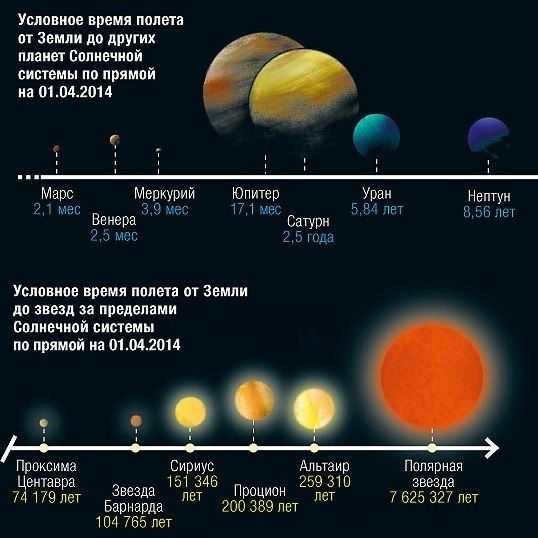

Mercury Endured the Collision of a Massive Asteroid
On the surface of Mercury lies an impressive feature called Caloris, which is a massive crater measuring approximately 1.5 kilometers in diameter and surrounded by mountains. Research and images of the basin suggest that it was once filled with lava.
It is believed that the formation of this crater and the release of hot magma from Mercury’s interior were caused by an asteroid collision. This occurrence serves as evidence of the planet’s ancient volcanic activity.
Mercury’s sky appears dark, even in the daytime, because it lacks an atmosphere that would typically scatter sunlight and create a bright-colored sky.
Additionally, the absence of an atmosphere on Mercury means that it does not have the ring formations found on some other celestial bodies in the solar system. These rings are formed by the melting of ice fragments, asteroid particles, and other materials exposed to intense solar winds near Mercury.
The extreme temperature variations and unfavorable conditions for water make it impossible for life to originate on Mercury.
Did you know these fascinating facts about Mercury?
- Scientists have made an incredible discovery – hidden deep within the craters of Mercury, there is ice! This ice could have been brought to Mercury by objects from outer space or formed from water vapor escaping from the planet’s interior. This extraordinary phenomenon has made Mercury an object of great interest for researchers.
- One of the most notable features on Mercury is the Kuiper crater, named after the renowned astronomer Jan Kuiper. This crater stands out as the brightest area on the planet’s surface, stretching an impressive 60 kilometers in length. Its size and visual impact are truly remarkable.
- Right after the formation of the planet, it was struck by a colossal and immensely heavy asteroid. The strength of the collision can be likened to an explosion that could generate a trillion megatons of explosive material. This tremendous impact resulted in the creation of a massive crater on the planet’s surface.
The most recent updates on Mercury
A groundbreaking revelation has been made by scientists: Mercury has been found to be an ongoing geologically dynamic planet. Following a meticulous examination of numerous minuscule rocky crevices scattered across the planet’s surface, it has been determined that Mercury experiences crustal contraction, indicating geologic metamorphosis. These phenomena are instigated by the fluid movement of the planet’s core.
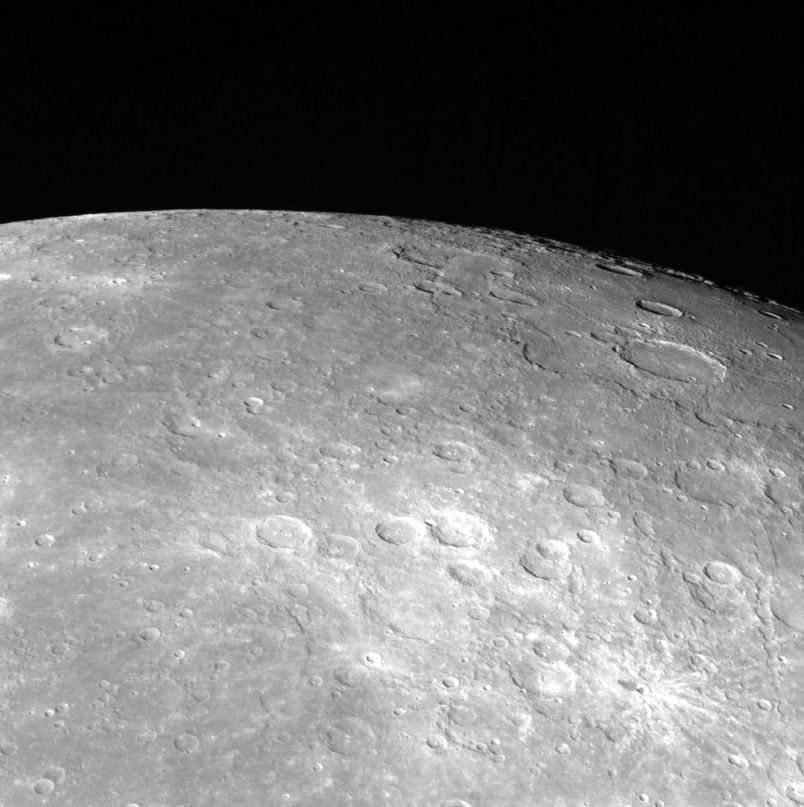
Mercury, which is the smallest and fourth brightest planet in our solar system, holds the distinction of being the closest to the Sun. This remarkable planet traverses its elliptical orbit at an average velocity of 48 km/s, positioned at an average distance of 57.91 million kilometers from the Sun’s radiant surface. The proximity of Mercury to the Sun is such that it appears three times larger when observed from its surface compared to the view from Earth’s surface.
As the smallest planet in our solar system, Mercury can be observed by the naked eye just above the horizon near the Sun shortly before dawn or just after dusk. During these moments, this planet’s luminous presence resembles that of a small, radiant star.
Observing this planet for extended periods of time is nearly impossible, even with state-of-the-art specialized telescopes, due to the intense energy emission from the nearby star. As a result, there is limited knowledge about this planet currently.
It was not until the 1960s that the truth was discovered
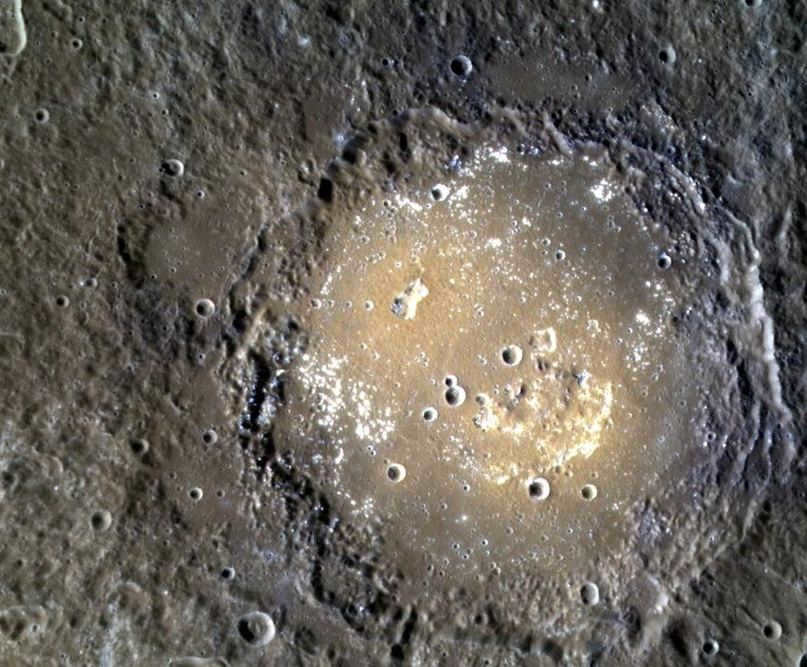
For a considerable duration, it was widely held that Mercury perpetually faced the same intensely heated side towards its center, and it completed one full revolution around its axis in 87.97 days. This mistaken belief arose when it was observed that the same region of the planet remained visible after a certain period of time – the triple synodic period.
In other words, every 348 days on Earth, which is approximately equivalent to 352 days, it was later discovered that this duration corresponds to six times the rotational period of Mercury. This accounts for the phenomenon where almost the same portion of the planet is visible after a certain time interval. The truth was only unveiled in the 1960s, during the 20th century, thanks to radar technology. It was then revealed that a sidereal day on Mercury amounts to 58.65 days on Earth, which is two-thirds of a Mercurian year.
A phenomenon that is truly one-of-a-kind
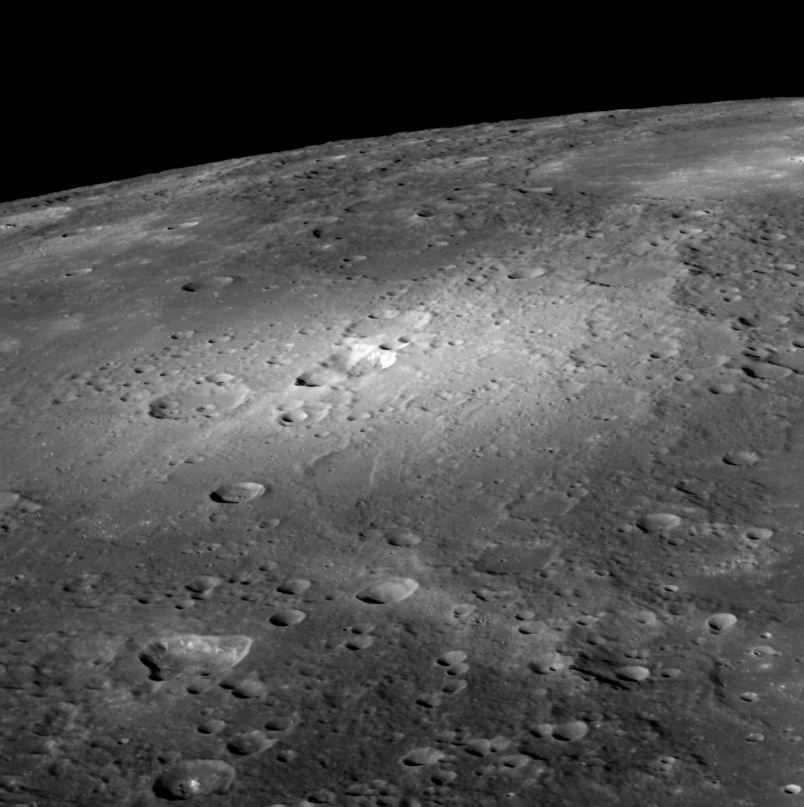

The Rachmaninoff Basin on Mercury
The synchronization of Mercury’s revolution around the Sun and its rotation around its own axis is a truly unique occurrence within the Solar System. This phenomenon is believed to be the result of a possible decrease in momentum and deceleration of Mercury’s rotation, which was originally faster. Eventually, both periods became interconnected at an integer ratio due to the tidal influence of the Sun. Consequently, Mercury completes one and a half revolutions around its axis in one Mercurian year, and a solar day on its surface lasts three Mercurian sidereal days or two Mercurian years.





